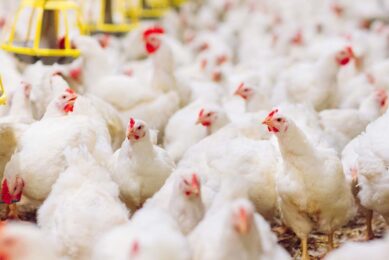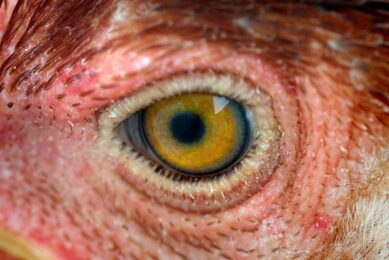Enriching the range to reduce feather pecking
Greater provision of pasture, shaded areas and shelter belts will attract birds into the free range, according to recommendations from a Poultry CRC project that explored enrichment strategies under Australian free range conditions. The use of repellents to suppress sporadic feather pecking was also explored.
The CRC project revealed that only 9% of birds on free range farms use the range area. Factors which influence use of the range include weather (temperature, wind and rain), season, age, flock size, time of day, shade and variety of overhead structures. European research has already suggested that feather pecking in free range flocks was greatest when a low percentage of the flock used the outside range. Therefore, decreasing the stocking density within the house should be beneficial.
The Poultry CRC project involved researchers at the South Australian Research & Development Institute (SARDI), the University of New England (UNE) and Queensland Primary Industries (DEEDI), and focused on alternatives to beak trimming. Trials under free range conditions were conducted in South Australia, Queensland and New South Wales.
Project Leader, SARDI’s Dr Phil Glatz, explained that the main benefit of enrichment is that it gets the birds out of the shed to engage in a wide range of natural behaviours. Trials at SARDI examined the role of shaded areas, the role of forage and the influence of shelter belts in the range. One trial suggested that forage availability has an impact on the percentage of birds using the range during the day.
“There is a perception that birds on free range farms in Australia are free to range but hardly ever go outside,” said Dr Glatz. “This work has shown that birds will utilise the free range when the environment is enriched and, hence, their behavioural repertoire is enhanced. From an industry point of view, however, the health risks to birds increase when they make greater use of the range, due to increased exposure to wild birds, et cetera.”
The Queensland trials, conducted by DEEDI’s Poultry Extension Officer, Ms Tanya Nagle, showed that on commercial free range farms, the addition of shadecloth shelters, shelterbelts and forage to the range area did attract more hens to utilise this area.
Trials at UNE conducted by Associate Professor Geoff Hinch suggest that initial exposure of chicks to repellents may be associated with a reduced incidence of cannibalism and could provide another option in a multiple strategy approach to reducing potential cannibalism in layers.
Join 31,000+ subscribers
Subscribe to our newsletter to stay updated about all the need-to-know content in the poultry sector, three times a week. Beheer
Beheer








 WP Admin
WP Admin  Bewerk bericht
Bewerk bericht